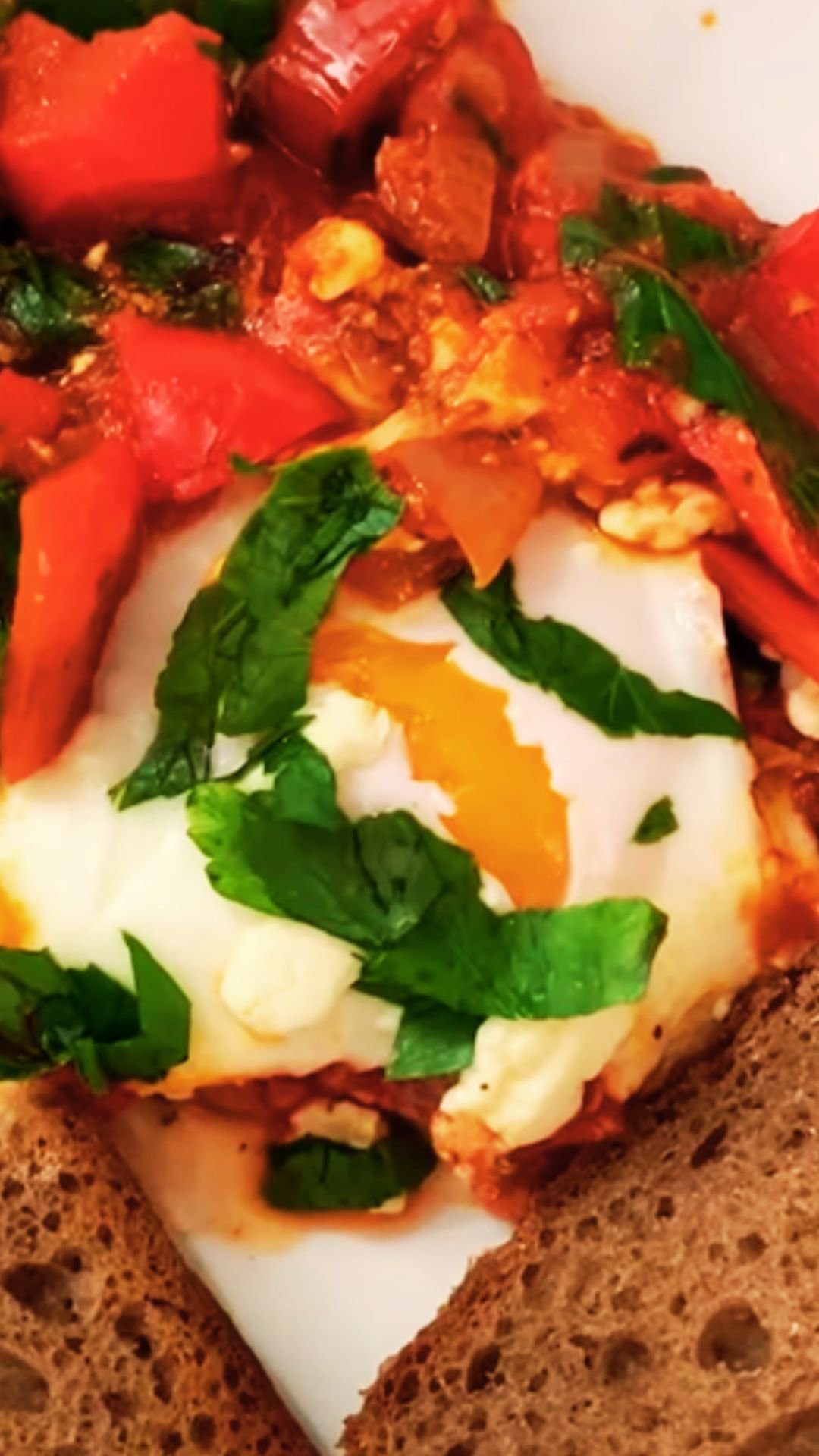When I first discovered Turkish cauliflower breakfast hash during my travels through Istanbul’s vibrant neighborhoods, I knew I had stumbled upon something extraordinary. This dish, locally known as “Karnabahar Kahvaltısı,” transforms humble cauliflower into a spectacular morning feast that challenges everything you thought you knew about breakfast vegetables.
The aromatic blend of cumin, paprika, and fresh herbs dancing with perfectly golden cauliflower creates a symphony of flavors that awakens your senses before your first cup of coffee. What makes this dish particularly special is how it bridges the gap between traditional Turkish breakfast culture and modern healthy eating trends, delivering both authenticity and nutrition in every bite.
Understanding Turkish Breakfast Culture
Turkish breakfast, or “kahvaltı,” literally translates to “before coffee,” reflecting the importance of a substantial morning meal in Turkish culture. Unlike the hurried breakfast routines common in Western countries, Turkish breakfast is a leisurely affair that brings families together around tables laden with diverse dishes.
Traditional Turkish Breakfast Elements:
- Çay (Tea): The cornerstone of any Turkish breakfast
- Peynir (Cheese): Various types including beyaz peynir and kaşar
- Zeytin (Olives): Green and black varieties
- Domates ve Salatalık (Tomatoes and Cucumbers): Fresh and crisp
- Börek: Flaky pastries filled with cheese or spinach
- Menemen: Scrambled eggs with tomatoes and peppers
The cauliflower hash fits beautifully into this tradition, offering a hearty vegetable component that satisfies both vegetarians and meat-lovers alike. My version incorporates classic Turkish spicing while maintaining the communal spirit of traditional kahvaltı.
The Star Ingredient: Cauliflower’s Nutritional Profile
Cauliflower has earned its reputation as a nutritional powerhouse, and when prepared Turkish-style, it becomes even more beneficial. The spices used in this recipe not only enhance flavor but also boost the vegetable’s health properties.
Detailed Nutritional Breakdown
| Nutrient | Per 100g Raw Cauliflower | Daily Value % | Health Benefits |
|---|---|---|---|
| Calories | 25 | 1% | Low-calorie, weight management |
| Protein | 1.9g | 4% | Muscle maintenance |
| Fiber | 2g | 8% | Digestive health, satiety |
| Vitamin C | 48.2mg | 80% | Immune support, collagen synthesis |
| Vitamin K | 15.5mcg | 19% | Bone health, blood clotting |
| Folate | 57mcg | 14% | Cell division, DNA synthesis |
| Potassium | 299mg | 9% | Heart health, blood pressure |
| Manganese | 0.2mg | 10% | Bone development, wound healing |
The cooking method I use preserves most of these nutrients while making them more bioavailable through the addition of healthy fats and complementary spices.
Essential Ingredients and Their Turkish Origins
Creating authentic Turkish cauliflower breakfast hash requires understanding each ingredient’s role in Turkish cuisine. I’ve spent years perfecting this recipe, and each component serves a specific purpose in building layers of flavor.
Primary Ingredients Breakdown
| Ingredient | Quantity | Turkish Name | Flavor Profile | Purpose |
|---|---|---|---|---|
| Cauliflower | 1 large head (2 lbs) | Karnabahar | Mild, nutty | Base vegetable |
| Olive Oil | 3 tablespoons | Zeytinyağı | Fruity, peppery | Cooking medium |
| Onion | 1 large | Soğan | Sweet, pungent | Flavor foundation |
| Garlic | 4 cloves | Sarımsak | Sharp, aromatic | Depth enhancer |
| Tomato Paste | 2 tablespoons | Salça | Rich, concentrated | Umami builder |
| Paprika | 1 tablespoon | Tatlı Biber | Sweet, smoky | Color and warmth |
| Cumin | 1 teaspoon | Kimyon | Earthy, warm | Signature spice |
| Red Pepper Flakes | 1/2 teaspoon | Pul Biber | Hot, fruity | Heat element |
Supporting Cast of Flavors
Fresh Herbs:
- Parsley (Maydanoz): Bright, fresh finish
- Dill (Dereotu): Subtle anise notes
- Mint (Nane): Cooling contrast
Optional Enhancements:
- Sumac (Sumak): Tangy, lemony brightness
- Turkish cheese: Creamy richness
- Pomegranate molasses: Sweet-tart complexity
Step-by-Step Cooking Method
My technique for preparing Turkish cauliflower breakfast hash has evolved through countless morning preparations. The key lies in achieving the perfect balance between tender cauliflower and caramelized edges while building layers of flavor at each stage.
Preparation Phase (15 minutes)
Equipment Needed:
- Large, heavy-bottomed skillet or cast iron pan
- Sharp chef’s knife
- Cutting board
- Small prep bowls
- Wooden spoon or spatula
Mise en Place:
- Remove cauliflower leaves and cut into uniform 1-inch florets
- Dice onion into 1/4-inch pieces
- Mince garlic finely
- Chop herbs roughly
- Measure all spices into small bowls
Cooking Process (25 minutes)
Stage 1: Building the Flavor Base (8 minutes) Heat olive oil in your largest skillet over medium heat. The oil should shimmer but not smoke. Add diced onions and cook, stirring occasionally, until they become translucent and begin to caramelize around the edges. This process takes patience – rushing it will result in bitter, burnt flavors instead of the sweet foundation we’re building.
Add minced garlic during the last minute of onion cooking, stirring constantly to prevent burning. The aroma should be fragrant and welcoming, not sharp or acrid.
Stage 2: Spice Activation (2 minutes) Push onions and garlic to one side of the pan and add tomato paste to the cleared space. Cook the paste for 30 seconds, stirring constantly, until it darkens slightly and becomes fragrant. This technique, called “blooming,” concentrates the tomato flavors and removes any tinny taste.
Add paprika, cumin, and red pepper flakes to the tomato paste, stirring for another 30 seconds until the spices become aromatic. The mixture should smell warm and complex, not bitter or burnt.
Stage 3: Cauliflower Integration (15 minutes) Add cauliflower florets to the pan, tossing to coat evenly with the spiced onion mixture. Season with salt and black pepper, then cover the pan and cook for 8-10 minutes, stirring every 3 minutes to ensure even cooking.
Remove the lid and increase heat to medium-high. Cook uncovered for 5-7 minutes, stirring less frequently to allow some pieces to develop golden-brown edges. The cauliflower should be tender when pierced with a fork but still maintain some structure.

Spice Blend Mastery
The spice combination in Turkish cauliflower breakfast hash represents centuries of culinary evolution. Each spice serves both flavor and functional purposes, creating a harmonious blend that enhances the cauliflower’s natural sweetness while adding complexity and warmth.
Spice Synergy Analysis
| Spice Combination | Flavor Chemistry | Health Benefits | Traditional Use |
|---|---|---|---|
| Paprika + Cumin | Smokiness meets earthiness | Anti-inflammatory properties | Ottoman palace cuisine |
| Garlic + Red Pepper | Sharp heat with pungency | Cardiovascular support | Anatolian mountain cooking |
| Tomato Paste + Herbs | Umami with freshness | Lycopene absorption | Mediterranean influence |
Spice Quality Indicators:
- Paprika: Deep red color, sweet aroma without mustiness
- Cumin: Whole seeds preferred, toasted before grinding
- Red Pepper Flakes: Bright color with visible seeds
- Garlic: Firm bulbs with tight, papery skin
Regional Variations
Different regions of Turkey add their own touches to this basic spice blend:
Southeastern Turkish Style: Addition of dried mint and extra heat from urfa pepper Black Sea Region: Fresh dill and a touch of anchovy paste Aegean Coast: More olive oil and fresh oregano Central Anatolia: Dried tomatoes and nigella seeds
Nutritional Benefits and Health Impact
This Turkish cauliflower breakfast hash delivers impressive nutritional value while satisfying comfort food cravings. The combination of vegetables, healthy fats, and spices creates a meal that supports various health goals.
Comprehensive Health Benefits
| Health Aspect | Specific Benefits | Contributing Ingredients |
|---|---|---|
| Digestive Health | High fiber, prebiotic support | Cauliflower, onions, garlic |
| Heart Health | Potassium, healthy fats | Olive oil, cauliflower |
| Immune Support | Vitamin C, antioxidants | Cauliflower, herbs, spices |
| Anti-inflammatory | Curcumin-like compounds | Turmeric, paprika, olive oil |
| Weight Management | Low calorie, high satiety | High fiber, protein content |
| Blood Sugar Control | Low glycemic impact | Complex carbohydrates, fiber |
Caloric Breakdown per Serving (1 cup):
- Total Calories: 95
- From Carbohydrates: 40 calories (42%)
- From Fats: 45 calories (47%)
- From Protein: 10 calories (11%)
This macronutrient distribution makes the dish suitable for various dietary approaches, from Mediterranean to low-carb eating patterns.
Serving Suggestions and Turkish Breakfast Pairings
The beauty of Turkish cauliflower breakfast hash lies in its versatility. I’ve served this dish to guests from various cultural backgrounds, and it consistently wins over even the most skeptical vegetable avoiders.
Traditional Turkish Breakfast Spread
Complete Kahvaltı Menu:
- Turkish cauliflower breakfast hash (center of the table)
- Fresh Turkish bread (pide or simit)
- Variety of Turkish cheeses
- Sliced tomatoes and cucumbers
- Turkish tea served in small glasses
- Homemade preserves and honey
Modern Adaptations:
- Topped with a poached egg for added protein
- Served alongside Greek yogurt with herbs
- Paired with avocado slices for healthy fats
- Accompanied by whole grain toast
International Fusion Ideas
Mediterranean Style: Add kalamata olives and feta cheese Middle Eastern Twist: Incorporate pomegranate seeds and tahini drizzle Mexican Influence: Top with avocado and fresh cilantro Indian Fusion: Add curry leaves and finish with yogurt
Storage and Meal Prep Strategies
One of the practical advantages of Turkish cauliflower breakfast hash is its excellent storage and reheating properties. I often prepare large batches on Sunday for weekday breakfasts, and the flavors actually improve after a day in the refrigerator.
Storage Guidelines
| Storage Method | Duration | Quality Notes | Reheating Instructions |
|---|---|---|---|
| Refrigerator | 4-5 days | Flavors meld and improve | Skillet over medium heat, 5 minutes |
| Freezer | 2-3 months | Texture slightly softer | Thaw overnight, reheat gently |
| Room Temperature | 2 hours maximum | Food safety concern | Not recommended |
Meal Prep Tips:
- Prepare vegetables in advance but store separately
- Make spice blend in larger quantities for multiple uses
- Partially cook on prep day, finish when serving
- Pack in individual containers for grab-and-go breakfasts
Troubleshooting Common Issues
Through years of making this dish, I’ve encountered and solved various cooking challenges. Here are the most common issues and their solutions:
Problem: Mushy Cauliflower
- Cause: Overcooking or too much liquid
- Solution: Cook uncovered for final browning stage
- Prevention: Cut florets uniformly, monitor cooking time
Problem: Bland Flavor
- Cause: Insufficient spice blooming or under-seasoning
- Solution: Add salt gradually, bloom spices properly
- Prevention: Taste and adjust seasonings throughout cooking
Problem: Burnt Spices
- Cause: Heat too high during spice addition
- Solution: Remove from heat, start over with spices
- Prevention: Control temperature, stir constantly
Problem: Uneven Cooking
- Cause: Overcrowded pan or irregular cutting
- Solution: Cook in batches if necessary
- Prevention: Use largest available pan, uniform cutting
Questions and Answers
Q: Can I make this dish ahead of time for meal prep?
Absolutely! Turkish cauliflower breakfast hash is excellent for meal prep. I recommend cooking it fully, then storing in individual containers in the refrigerator for up to 5 days. The flavors actually develop and improve overnight. When reheating, use a skillet over medium heat for about 5 minutes, adding a splash of water if needed to prevent sticking.
Q: What can I substitute for cauliflower if I don’t like it or can’t find it?
While cauliflower is traditional, I’ve successfully made this recipe with Brussels sprouts, broccoli, or even diced potatoes. Brussels sprouts work particularly well – just halve them and increase the cooking time by about 5 minutes. For a lower-carb option, try using chopped cabbage, which cooks faster and absorbs the spices beautifully.
Q: Is this dish suitable for vegans and vegetarians?
Yes, the basic recipe is completely vegan and vegetarian-friendly. All the flavor comes from vegetables, spices, and olive oil. If you want to add protein, consider topping with nuts, seeds, or for non-vegans, a poached egg or crumbled cheese.
Q: How spicy is this dish, and can I adjust the heat level?
The heat level is mild to moderate, suitable for most palates. The red pepper flakes provide gentle warmth rather than intense heat. To make it milder, reduce or omit the red pepper flakes. For more heat, add extra red pepper flakes or include some fresh sliced jalapeños during the onion cooking stage.
Q: Can I use frozen cauliflower instead of fresh?
While fresh cauliflower gives the best texture and flavor, frozen can work in a pinch. Thaw it completely and pat dry before using. Keep in mind that frozen cauliflower releases more water during cooking, so you may need to cook uncovered for a longer time to achieve proper browning.
Q: What’s the best way to cut cauliflower for this recipe?
I cut the cauliflower into uniform 1-inch florets, which ensures even cooking. Remove the leaves and thick stem, then break or cut the head into natural sections before dividing into smaller pieces. Try to keep pieces similar in size so they cook at the same rate.
Q: Can I add other vegetables to this dish?
Certainly! Bell peppers, zucchini, or eggplant make excellent additions. Add firmer vegetables like peppers early in the cooking process, while softer vegetables like zucchini should be added during the last few minutes to prevent overcooking.
Q: How do I know when the cauliflower is perfectly cooked?
Perfectly cooked cauliflower should be tender when pierced with a fork but still hold its shape. It shouldn’t be mushy or falling apart. The edges should have some golden-brown caramelization, which adds depth of flavor and visual appeal.
Q: What type of olive oil works best for this recipe?
I prefer using extra virgin olive oil for its superior flavor, but any good-quality olive oil will work. The olive oil should have a fruity aroma and not taste bitter or rancid. Since we’re cooking at medium heat, extra virgin olive oil’s smoke point is perfectly adequate for this recipe.
Q: Can I make this dish without tomato paste?
While tomato paste adds important umami depth and helps bind the spices, you can substitute it with fresh grated tomato (remove seeds and excess liquid) or even a small amount of sun-dried tomato paste. The dish will taste different but still delicious. For a completely different flavor profile, try using harissa paste instead.
This Turkish cauliflower breakfast hash represents more than just a recipe – it’s a bridge between cultures, a celebration of simple ingredients transformed through technique and tradition. Every time I prepare this dish, I’m reminded of those magical Istanbul mornings and the power of food to connect us across continents and cultures. Whether you’re looking to expand your breakfast repertoire, incorporate more vegetables into your morning routine, or simply try something deliciously different, this dish delivers on all fronts.


